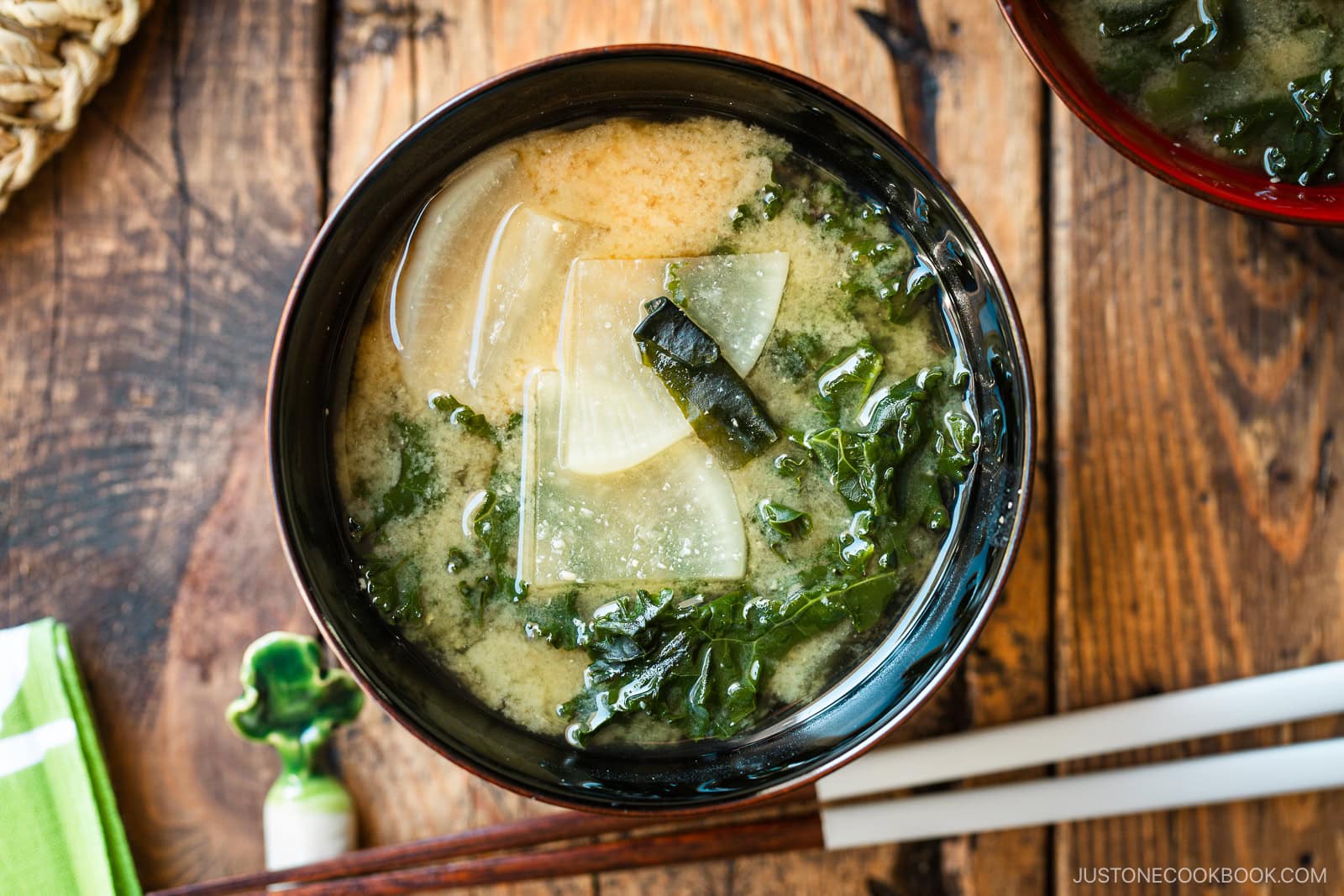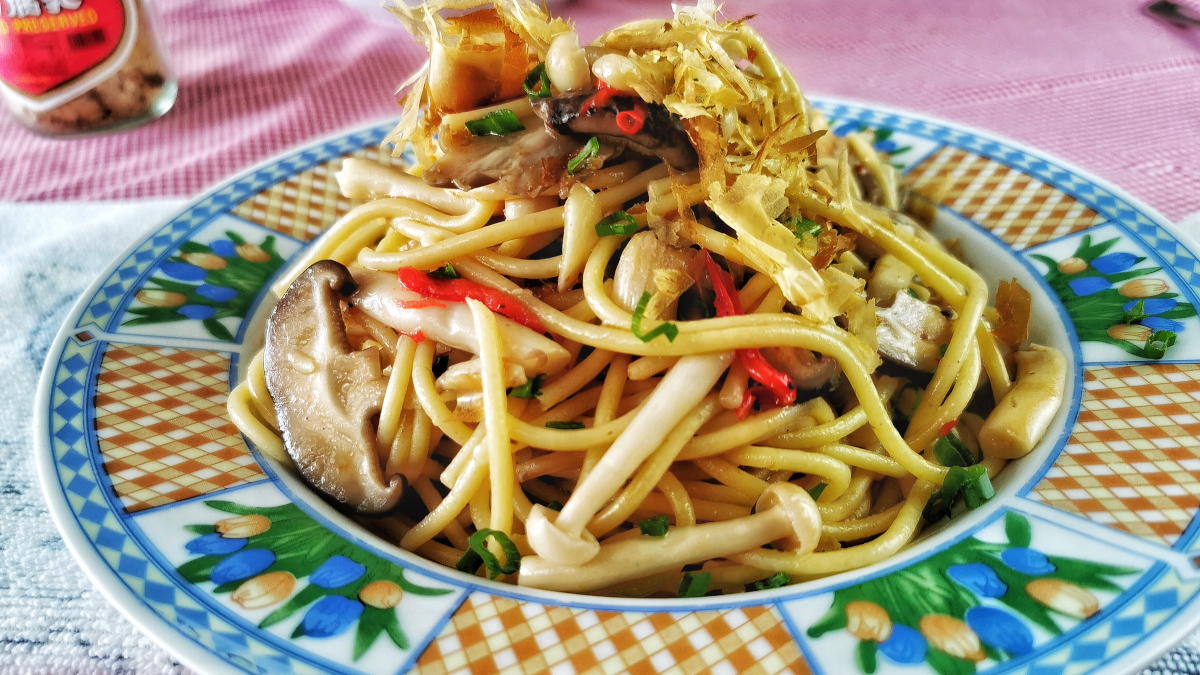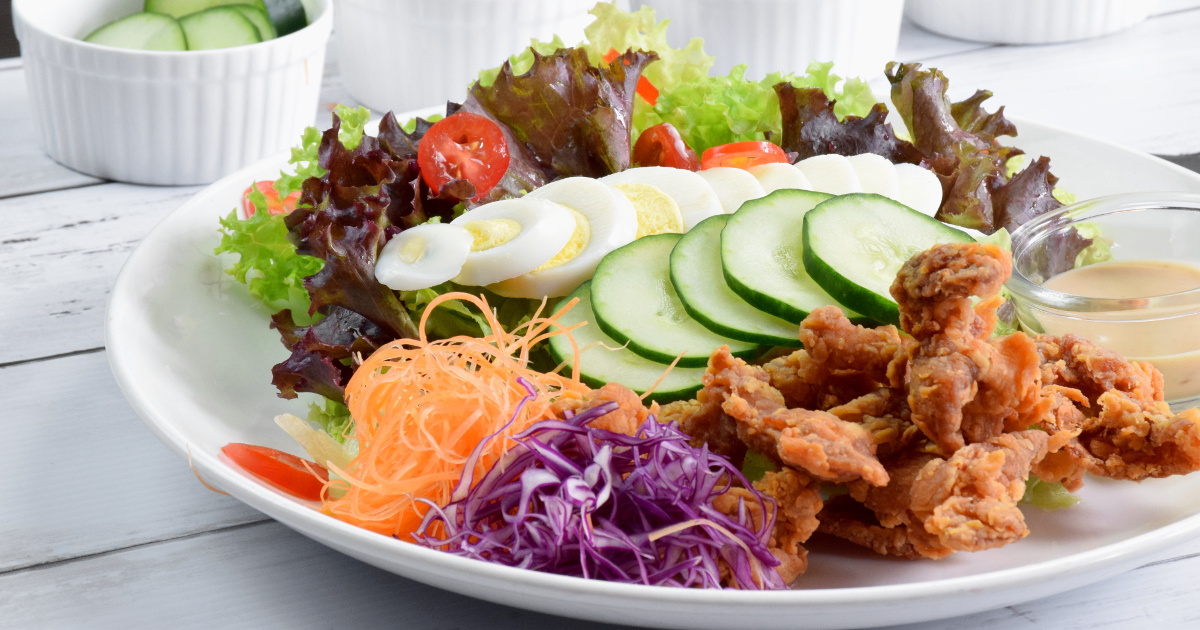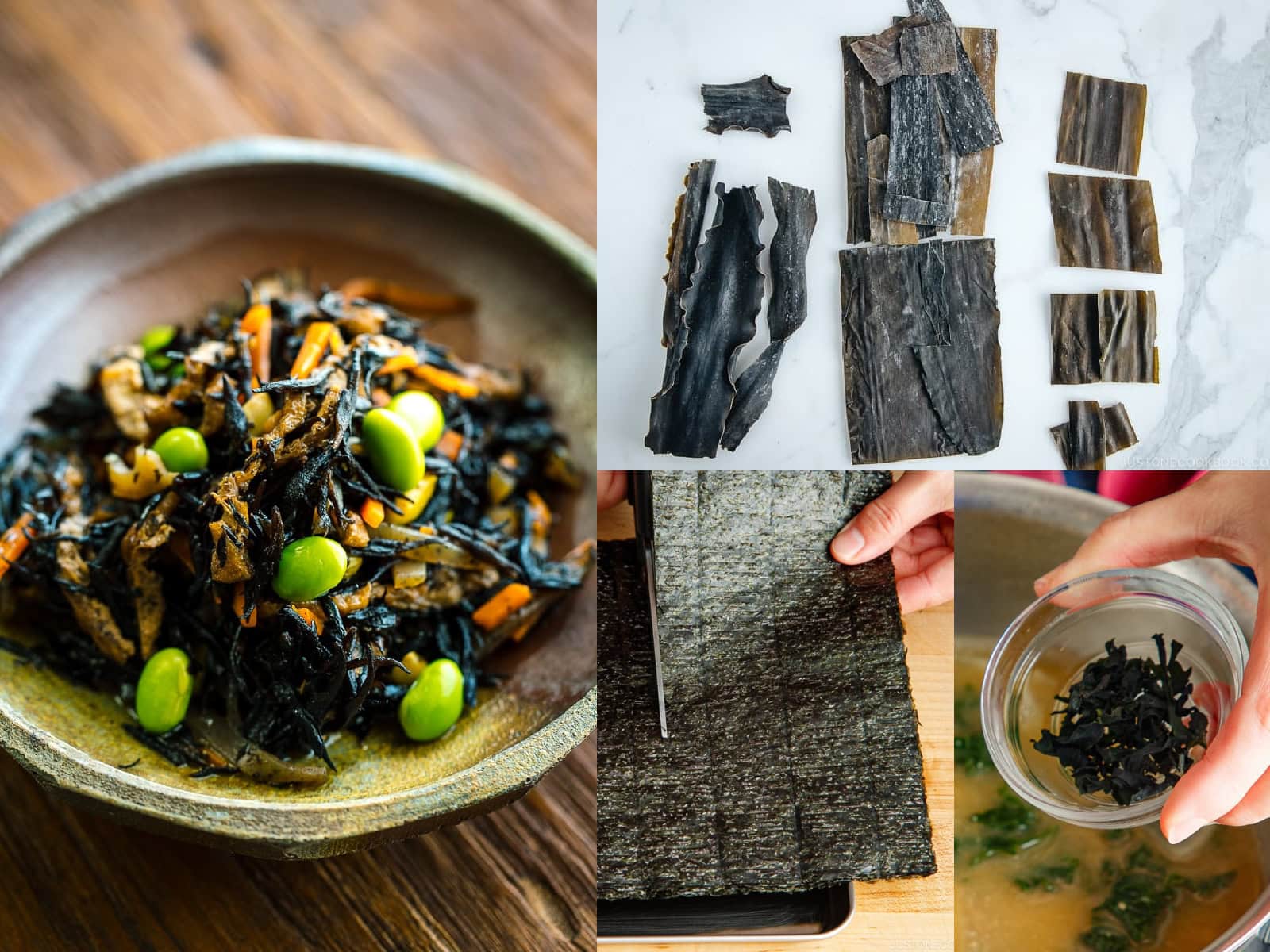Enhance the fiber and nutrient content of your meals with this comforting Kale Daikon Miso Soup recipe. It’s a delightful way to combine umami-rich miso broth with the fresh vegetables you have on hand. This soup is easily adaptable for vegans and vegetarians and can be prepared in just 20 minutes.
While sushi shops and Japanese restaurants often feature classic miso soup on their menus, many Japanese home cooks, like myself, create numerous variations of this versatile dish based on seasonal ingredients and what’s available in the fridge. My cozy Kale Daikon Miso Soup is one such variation that enhances the fiber and nutritional value of this umami-rich soup.
If you enjoy Japanese miso soup, consider trying my Homemade Miso Soup, Tonjiru, and Kansai-style Ozoni recipes next!
Why I Love This Recipe
- A light and healthy soup – Miso soup is an essential part of a balanced diet in Japan, and this version is loaded with fiber and nutrients.
- A delicious way to prepare kale – This nutrient-rich green pairs beautifully with sweet, tender daikon in a savory miso broth.
- My quick dashi saves time – Follow my instructions for a quick method to create a flavorful Japanese soup stock in just 5 minutes.
Ingredients for Kale Daikon Miso Soup
Find the printable recipe with measurements below.
Substitutions
- Kale: I used curly kale, but Tuscan (lacinato or dinosaur) kale is equally delicious.
- Miso: Any type will work. Since some miso varieties are saltier than others, I recommend starting with a smaller amount and tasting the soup before adding more.
- Dashi packets: I love using these convenient packets for a quick dashi in 5 minutes that tastes almost as good as homemade Awase Dashi. If you’re in a hurry, you can use dashi powder and water for an instant stock, though it won’t be as flavorful. Alternatively, you can prepare a plant-based Vegan Dashi.
How to Make Kale Daikon Miso Soup
Preparation
Step 1 – Cut the daikon. Peel and quarter it lengthwise, then thinly slice it crosswise.
Step 2 – Prepare the kale. Strip the kale leaves from the tough stems and chop them into bite-sized pieces.
Cooking
Step 3 – Make the dashi. In a medium saucepan, bring a few cups of water, the dashi packets, and the daikon to a boil. Cook briefly, then discard the packets.
Step 4 – Add the kale. Cover and simmer until both the kale and daikon are tender, about 5 minutes. The daikon should be translucent, and the kale wilted. Turn off the heat.
Assemble
Step 5 – Add the miso and wakame. Dissolve the miso paste in a ladleful of hot stock before adding it to the soup. Sprinkle in the dried wakame and stir to combine and rehydrate.
Step 6 – Serve. Serve hot in individual bowls and enjoy!
Nami’s Recipe Tips
- Cut the daikon into thin pieces – Thin slices cook more quickly and are easier to pick up with chopsticks when enjoying the soup.
- Cook the veggies until perfectly tender – Test for tender kale and daikon with your fingers or a bamboo skewer that pierces the radish easily.
- Add the miso right before serving – I always turn off the heat before adding miso to the broth to preserve its best flavor and aroma. Never boil miso!
- Dissolve the paste first – Always dissolve the miso in a ladle or separate bowl—never add it directly to the soup to avoid chunks of paste. I like to use a convenient miso muddler and fine-mesh miso strainer for this task.
- Start with less miso – Some types are higher in sodium than others, so I recommend adding 3 tablespoons of miso paste initially. Then, taste the soup and decide if you want to add more. The miso I used has a mild flavor, so I added an extra tablespoon.
- Don’t cook the wakame – Simply sprinkle this dried seaweed into the hot soup to rehydrate just before serving.
Variations and Customizations
- Try cabbage. Instead of kale, use chopped green cabbage or napa cabbage.
- Use Japanese turnips. Swap out the daikon for Japanese turnips (kabu) when they’re in season. With a mild sweet taste and crunchy texture, kabu are delicious in soup. You can even chop and add the leafy turnip greens.
- Add deep-fried tofu pouches. For extra protein and savory flavor, consider adding plant-based aburaage.
- Top with green onions. Aromatic chopped scallions are a classic garnish for miso soup.
- Make it vegan/vegetarian. Use Vegan Dashi or Kombu Dashi to keep it plant-based.
What to Serve with Kale Daikon Miso Soup
Miso soup is incredibly versatile and pairs well with many dishes. Here are a few suggestions:
Storage and Reheating Tips
To store: It’s best to consume all the miso soup immediately, as it will lose its aroma and flavor over time. Cool any leftovers completely and refrigerate for up to 3–4 days. You can also freeze miso soup for up to 2 weeks.
To reheat: Bring it to a gentle simmer in a pot over medium heat, but avoid boiling, as high temperatures can degrade the flavor and nutrients of the miso.
Frequently Asked Questions
You can certainly add Tokyo negi (Japanese long onion), garlic chives, chopped medium leek, spring onion, or grated fresh ginger to the soup broth. However, I do not recommend garlic cloves or shallots, as they are not typical in miso soup or traditional Japanese cooking.
What can I use instead of daikon?
If you’re not fond of daikon or turnips, you can try other root vegetables like parsnips, rutabaga, large carrots, or potatoes. For a meaty texture, consider adding shiitake mushrooms.
Can I add additional seasonings?
Feel free to try a teaspoon of sesame oil, a few drops of Japanese chili oil, or some freshly ground black pepper. You can add salt, but be sure to taste the soup first, as miso paste already contains a significant amount of sodium.
How do I add more protein to this dish?
To add protein, tear a block of firm tofu into bite-sized cubes after draining the excess water, then add the chunks to the soup pot.
To Prepare the Ingredients
- Peel 3.5 oz daikon radish and cut it lengthwise into quarters.
- Thinly slice the daikon crosswise.
- Strip the leaves off the tough stems of 2 oz kale and coarsely chop the leaves into bite-sized pieces.
To Cook
- Add the daikon, 3 cups water, and 2 dashi packets to a medium saucepan. Cover and bring to a boil over medium heat.
- Once boiling, shake the dashi packets with cooking chopsticks to release more flavor. Reduce heat to medium-low and cook, covered, for 2–3 minutes. Discard the packets.
- Add the kale leaves to the pot and stir. Cover and simmer until the daikon and kale are tender, about 5 minutes.
- Check doneness by piercing a piece of daikon with a bamboo skewer; it should go through easily. The daikon should be translucent, and the kale wilted. Turn off the heat.
To Add the Miso and Wakame
- With the heat off, add 3 tablespoons miso to a ladleful of hot stock. Mix with chopsticks to dissolve completely, then stir into the broth. Taste and add more miso if needed.
- Add 1 tablespoon dried wakame seaweed to the soup and stir to combine and rehydrate. Add wakame just before serving to retain its fresh aroma and color.
- Serve immediately in individual bowls and enjoy.
To Store
- It’s best to consume all the miso soup right away, as it will lose its aroma and taste over time. Cool any leftovers completely and refrigerate for up to 3–4 days. You can also freeze miso soup for up to 2 weeks. To reheat, bring it to a gentle simmer over medium heat, but do not boil.
Calories: 28 kcal
Carbohydrates: 4 g
Protein: 2 g
Fat: 1 g
Sodium: 363 mg
Fiber: 2 g
Author: Namiko Hirasawa Chen





